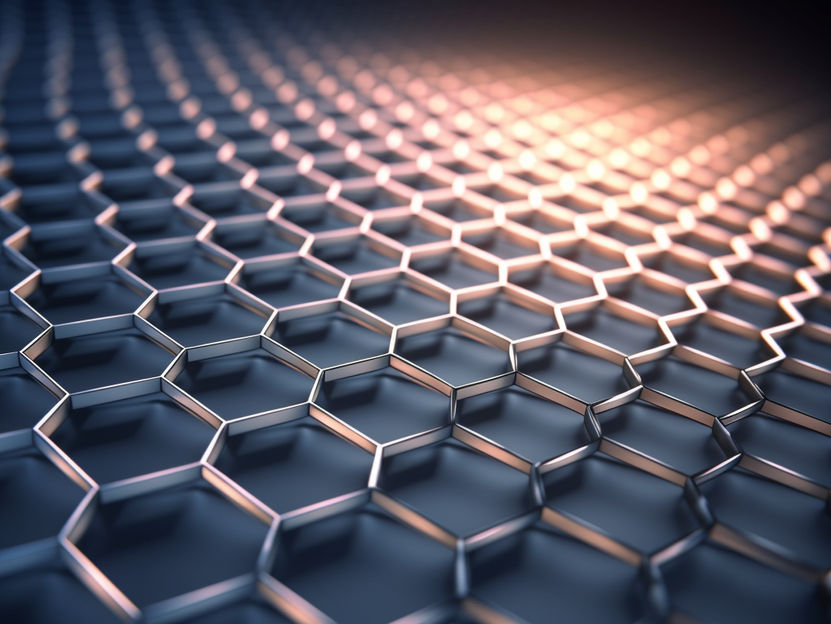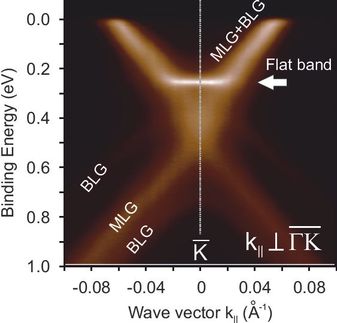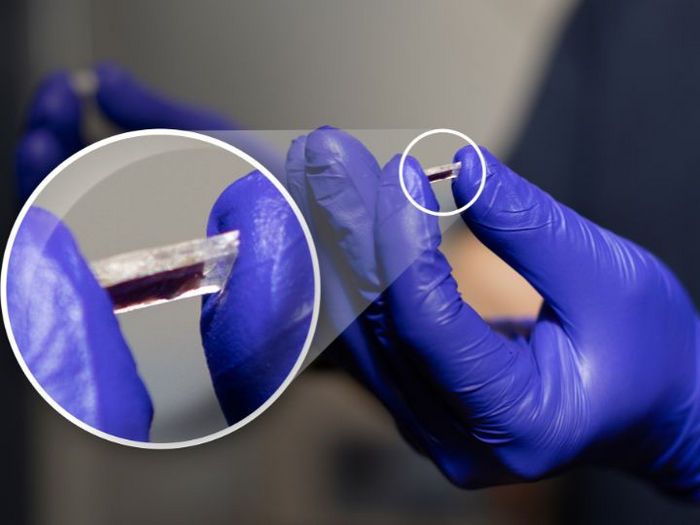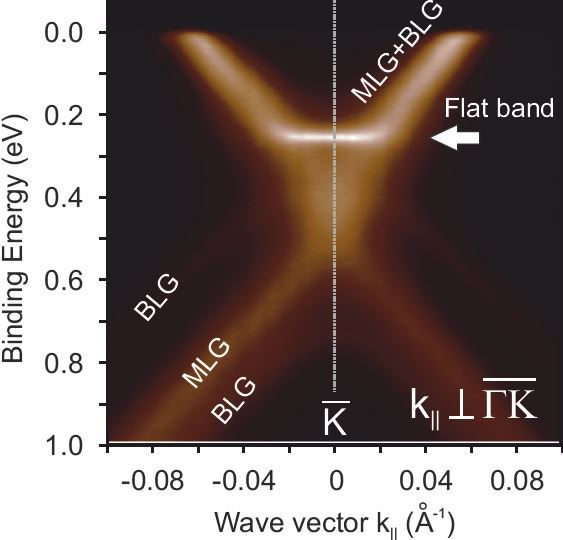Near perfect particle-hole symmetry in graphene quantum dots
“This goes beyond what can be done in conventional semiconductors or any other two-dimensional electron system”
Researchers at RWTH Aachen University and Forschungszentrum Jülich have uncovered important characteristics of double quantum dots in bilayer graphene, an increasingly promising material for possible applications in quantum technologies. The team has demonstrated near-perfect particle-hole symmetry in graphene quantum dots, which could lead to more efficient quantum information processing. The study has been published in Nature.

Symbolic image
Computer-generated image
Double quantum dots have been extensively studied in standard semiconductor platforms such as gallium arsenide, silicon or silicon germanium, as they provide a convenient solid-state platform for encoding quantum information. The 2D Materials and Quantum Devices Group at RWTH Aachen University has now shown that double quantum dots in bilayer graphene have more to offer than in other materials: they allow the realization of systems with near-perfect particle-hole symmetry, where transport occurs via the creation and annihilation of single electron-hole pairs with opposite quantum numbers. This results in strong selection rules that can be used for high-fidelity readout schemes of spin and valley qubits.
Antiparticles – also known as holes
In 1931, the British physicist Paul Dirac published a paper where he predicted the existence of an “antielectron”. This antiparticle would have the same mass as an electron but the opposite charge and spin, and a particle-antiparticle pair would annihilate upon interaction. The existence of the antielectron – which was eventually named positron – was proved experimentally one year later. This was the first occurrence of an antiparticle.
The concept of antiparticles plays a central role in condensed matter physics, where antiparticles are typically referred to as holes. For example, the presence (or absence) of symmetry between particle- and hole-states is important for characterizing topological phases in condensed matter systems. However, particle-hole symmetry is rarely expected to be present in semiconductors. A noticeable exception is gapped bilayer graphene in the low-energy limit.
Quantum dots for electrons and holes
“Bilayer graphene is a very unique semiconductor,” explains Christoph Stampfer, professor for Experimental Physics at RWTH Aachen University and corresponding author of the paper. “It shares several properties with monolayer graphene, such as low spin-orbit coupling and a low-energy spectrum that is perfectly electron-hole symmetric. This makes it very interesting for quantum technologies. In addition, it has a band gap that can be tuned from zero to about 120 milli-electronvolts by an external electric field.”
The band gap allows to create quantum dots in bilayer graphene using gate geometries very similar to those used in silicon. However, because of the small size of the gap, these quantum dots can be ambipolar, meaning they can trap both electrons and holes, depending on the voltage applied on the gates. Exploiting this property and the exquisite level of electrostatic control achieved in their bilayer-graphene devices, Stampfer and colleagues have created electron-hole double quantum dots where each of the dots hosts at maximum one electron or one hole. In such a system, electrical transport can only occur if electron-hole pairs with opposite quantum numbers can be continuously created or annihilated.
Symmetry almost perfectly preserved
This fact has two remarkable consequences. First, by a careful analysis of the current through the system, the authors have been able to experimentally prove the symmetry between electron and hole states in bilayer graphene for the first time. They showed that the symmetry is almost perfectly preserved even when electron and holes are physically separated into different quantum dots. Second, they unveiled that this symmetry leads to a strong and robust blockade mechanism in the transport through the system, which can provide a reliable read-out scheme for spin and valley qubits.
“This goes beyond what can be done in conventional semiconductors or any other two-dimensional electron system,” says Professor Fabian Hassler of the JARA Institute for Quantum Information at RWTH Aachen University, and co-author of the paper. “The near perfect symmetry that we observe in our work and the strong selection rules that result from this symmetry are very attractive not only for qubit operation, but also for implementing single particle tera-Hertz detectors. In addition, it will be interesting to couple bilayer graphene quantum dots with superconductors – two systems where electron-hole symmetry plays an important role. These hybrid devices could be exploited to create efficient sources of entangled particle pairs or engineered topological systems, thus bringing us one step further towards realizing topological quantum computing devices.”


































































